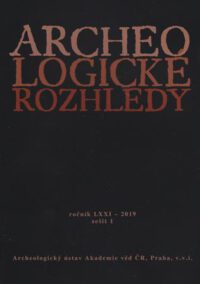Die Formen kulturellen Kontaktes in der Ägäischen Mittel- und frühen Spätbronzezeit, oft assoziiert mit dem Begriff „Minoisierung“, sind in der Forschung immer noch ein intensiv diskutiertes Thema. Diese Diskussion umfasst zum einen neues archäologisches Material (vgl. Girella – Pavúk 2015) und zum anderen die Interpretation der materiellen Hinterlassenschaften (vgl. Davis – Gorogianni 2008; Knappett – Nikolakopoulou 2005; Knappett – Nikolakopoulou 2008). Trotz der intensiven Diskussion verschiedener Interpretationsansätze seit den 1980er Jahren (vgl. Hägg – Marinatos 1984), sorgt die zeitliche und örtliche Heterogenität des archäologischen Materials, zusammengefasst unter dem Begriff „Minoisierung“, für eine anhaltende wissenschaftliche Auseinandersetzung mit diesem Thema.
Aufgrund dieser Heterogenität stoßen Ansätze, die auf Gustaf Kosinnas „Siedlungsarchäologische Methode“ (Kosinna 1920) beruhen, sowie die Weltsystem-Theorie an ihre Grenzen (Broodbank 2004; Momigliano 2009). Aus diesem Grund rücken bei neueren Ansätzen die eigentliche Organisation des ägäischen Kommunikationsnetzwerkes sowie dessen Akteure in den Vordergrund.
The forms of cultural contact in the Aegean Middle and Early Late Bronze Age, often associated with the term „Minoization“, are still an intensely discussed topic in research. This discussion includes, on the one hand, new archaeological material (cf. Girella – Pavúk 2015) and, on the other hand, the interpretation of the material legacies (cf. Davis – Gorogianni 2008; Knappett – Nikolakopoulou 2005; Knappett – Nikolakopoulou 2008). Despite the intensive discussion of various interpretation approaches since the 1980s (cf. Hägg – Marinatos 1984), the temporal and spatial heterogeneity of the archaeological material, summarized under the term „Minoization“, ensures that this topic is the subject of ongoing scientific debate.
Due to this heterogeneity, approaches based on Gustaf Kosinna’s „Settlement Archaeological Method“ (Kosinna 1920) and the world system theory reach their limits (Broodbank 2004; Momigliano 2009). For this reason, the actual organization of the Aegean communication network and its actors are coming to the fore in newer approaches.
Inhaltsverzeichnis
German summary
Abstract
Acknowledgments
Introduction
The archaeological site
• Location
• Exploration and main results
• Stratigraphy and structures
• Chronology
• Conclusion
The material
• Wares and fabrics
• Overview of the pottery
• Catalogue
• Analysis
• Conclusion
Comparison with contemporaneous South Aegean harbour sites
• The sites and their imported pottery
• Results
• Conclusion
The archaeological and geographical framework
• ‘Minoanisation’
• Raw materials and sea routes
• The introduction of the sailing ship
• The wider Eastern Mediterranean context
• Changes in settlement patterns
• Increasing production and consumption
• Conclusion
Interpreting ‘Minoanisation’
• World System Theory and ‘Thalassocracy
• Networks and actors
• ‘Minoan’ koine
• Knossos: centre of gravity
Summary
Sources & Bibliography
Figures
Plates
Concordances






